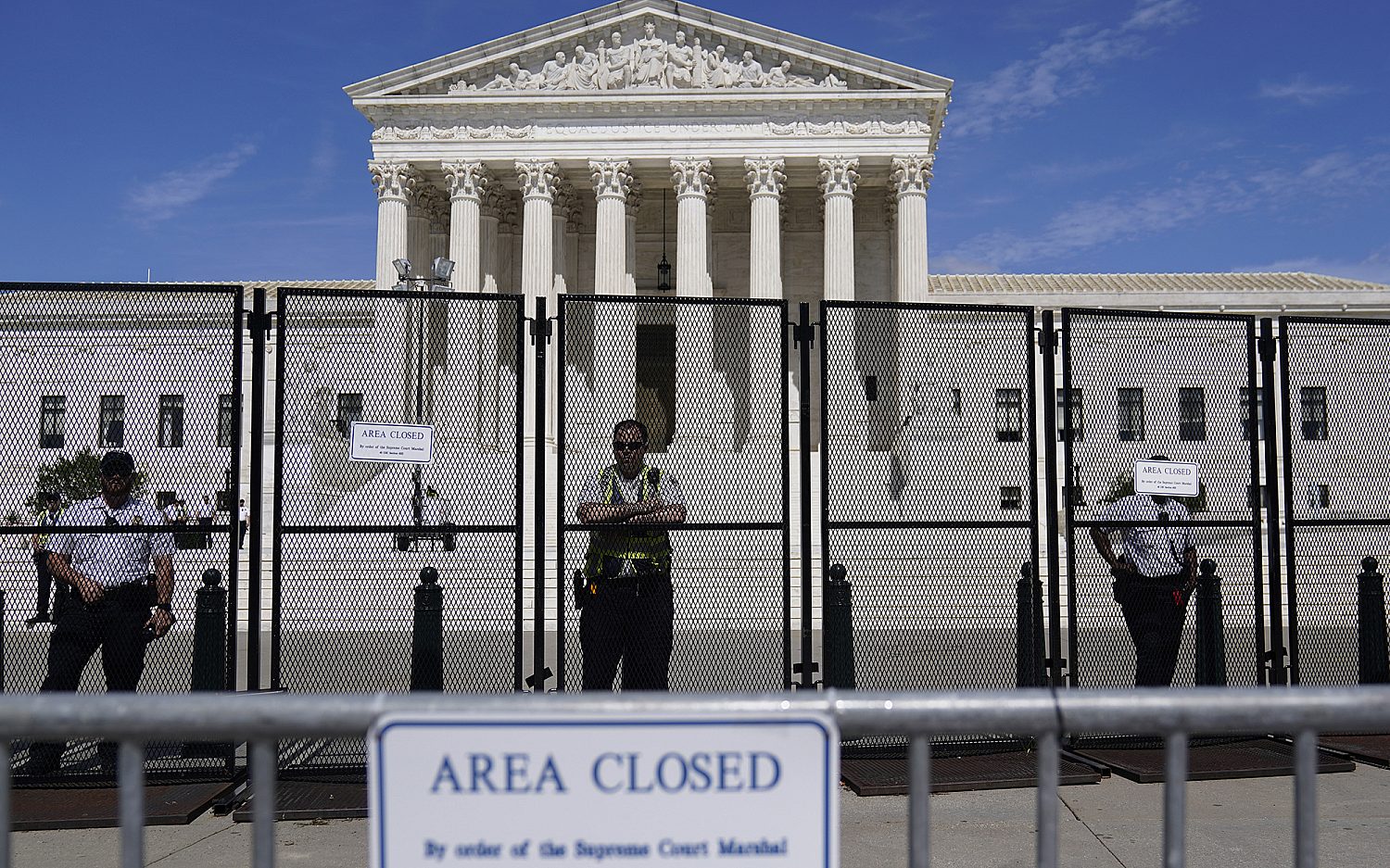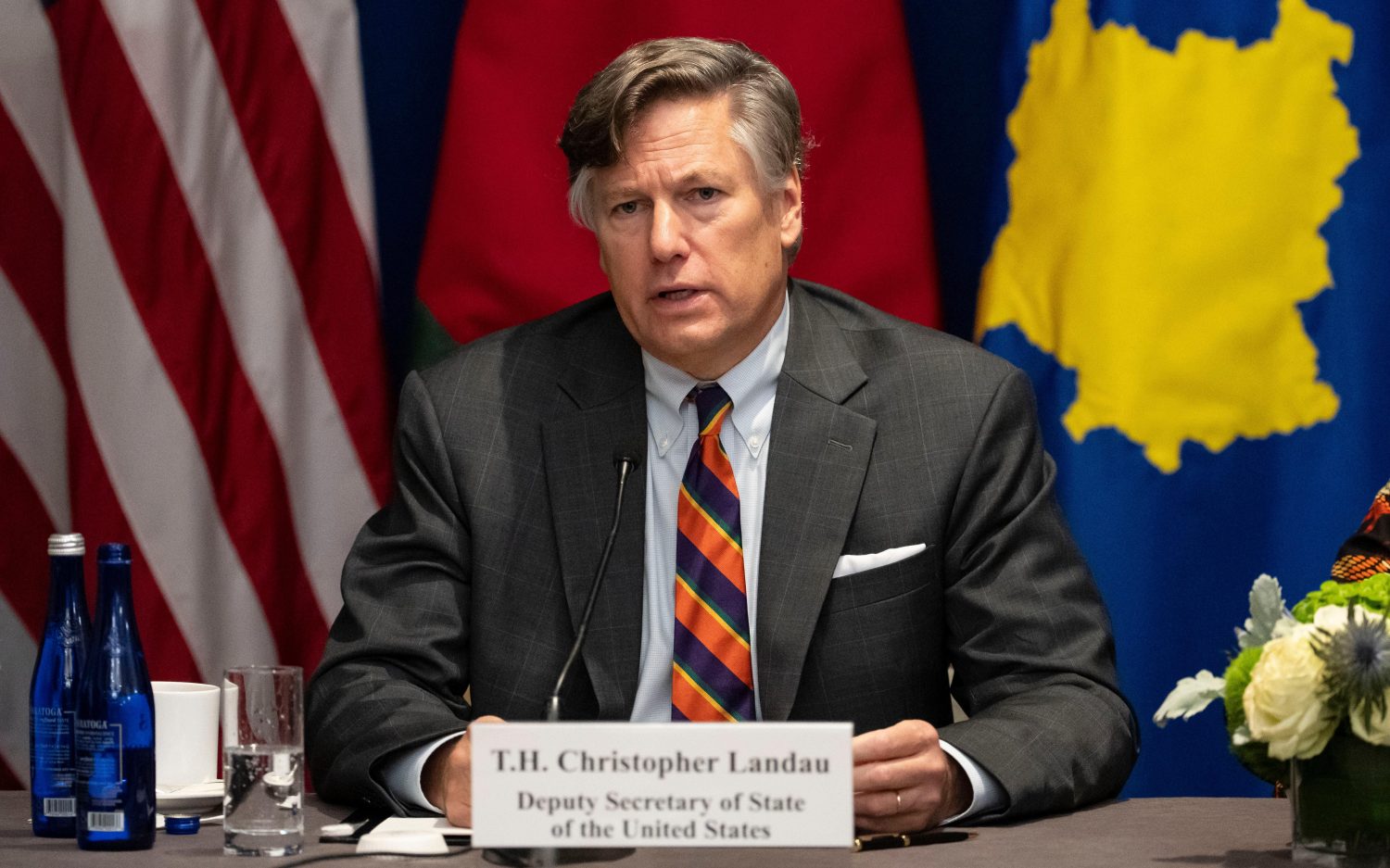Is advocating for marriage a lost cause?
Bradford Wilcox, director of the National Marriage Project, urges policy-makers to recognize the role two-parent families play in ending the cycle of poverty
Bradford Wilcox is the director of the National Marriage Project at the University of Virginia. His research on marriage, religion, and family life has been featured in the Los Angeles Times, The New York Times, The Wall Street Journal, and other national publications. Wilcox, a devout Roman Catholic, is an associate professor of sociology and oversees the publication of an annual report on marriage in America entitled, The State of Our Unions. We talked about why research on the family is so sensitive and what it’s telling us about the future of our culture.
Tell us a little bit about the National Marriage Project. The project aims to assess the health of marriage in America with an eye toward the impact that marriage has, particularly on kids, in the United States. We look at a range of cultural and policy measures that can be undertaken to strengthen the fortunes of marriage and family life in the United States.
President Barack Obama has made ending income inequality a cornerstone of his domestic policy to end poverty, yet you say it’s not important. [A] study from Harvard and Berkeley suggests that income inequality, per se, doesn’t have a lot to do with the odds that poor kids will move up the economic ladder in America. By contrast, things like growth at the local level, the health of marriage at the local level, the health of schools at the local level, but also things like economic and racial segregation, are important for affecting poor kids’ opportunities to live out the American dream.
Sometimes it is hard to parse what is cause, what’s effect, and what’s a correlation. Right? This is basically correlational data from this Harvard-Berkeley data set. But it is interesting to note … the strongest correlation between a community’s ability to foster the American dream and any other factor is family structure. Communities like the Salt Lake City metro area with high percentages of two-parent families are much more likely to help poor kids move up the economic ladder.
You compare and contrast Salt Lake City with a city like Atlanta. The reality is there is a high level of single parenthood throughout much of the South. This new data set from Harvard and Berkeley indicates that high levels of single parenthood might be one of the factors—as well as economic and racial segregation in many of those cities—that is retarding, or limiting, economic mobility for poor kids throughout much of the Southeast.
Another area of study in your career has been fertility. What key insights have you found over the last dozen or so years in your study of this area? There’s obviously a lot of talk about American exceptionalism, and one area where that’s the case is fertility. Compared to many European countries, we’ve had a higher level of fertility that’s been closer to the replacement level of fertility, which is having 2.1 kids per woman on average. That level of fertility allows the population to remain stable. In the last five or six years in the wake of the Great Recession, we’ve seen the fertility rate fall to a 25-year low of about 1.8 or 1.9 kids per woman on average.
We’re not falling to the low levels you see right now in places like Japan, Korea, Italy, or Spain. Those are countries with a real population crisis because they’re at very low levels of fertility. But we are at a level of fertility that’s much more common in a place like Northern Europe. We’re moving toward the European pattern when it comes to fertility, and that suggests that our exceptional tradition with regard to having kids may be going by the wayside.
Why is it a problem that fertility rates are lower? It’s not really a problem for the United States right now. [A rate of] 1.9 or 1.8 is not going to pose any major challenges to the American way of life, economically or otherwise. The problem, though, is facing countries in East Asia like Japan, Taiwan, China, South Korea, and many countries in Southern Europe, where they are facing real depopulation. That’s going to affect their ability to have a vital and growing workforce, to pay for things like public pensions and welfare and medical care for the elderly, etc., as they see the ratio of older people to younger people growing, growing, growing. … I think for these economies in Southern Europe and East Asia they are going to be paying a big economic price for their depopulation.
Does any of your research suggest fertility rates will be affected by immigration reform or other global trends in migration? In the near term, I don’t see a dramatic decline in migration. But it is interesting to note that the fertility declines that we’ve been talking about are also found in places like Central and South America. The Mexican fertility rate, for instance, has fallen dramatically in the last few decades, from 1995, for instance, about 3.5 kids per woman on average to about 2.4 [today]. What that means, effectively, is there are going to be fewer and fewer young adults from Mexico in the next few decades looking to migrate into the United States.
We’ve been talking about marriage, fertility rates, and related issues. Talk a little bit about the role religion and culture have on those areas. In the last 40 years or so, there’s been a marked decline in the marriage and the fertility rate for American adults. People are getting married later. They’re more likely to divorce, more likely to remain single, than was the case 40 years ago or so. They’re also having less children. I think the trajectory that we’ve seen of dramatic retreats from marriage and fertility have leveled off to an important extent in the last decade and a half. I think one of the factors that has been a ceiling effect, or a floor effect, depending on the topic we’re addressing, is the impact of religion. … There still is a share, depends on how you measure it, of about 20 percent of Americans who are deeply religious.
On average, they’re more likely to get and stay married, and they’re more likely to have children. At least, according to work done by Robert Putnam and David Campbell. The share of practicing evangelicals continues to remain pretty steady over the last few decades. We’re also seeing an uptick in the number of practicing Mormons and … a pretty marked increase when it comes to births among orthodox Jews. I think one factor that’s limiting the United States from even more dramatic declines in marriage and fertility is the fact that there’s a significant minority of Americans who take their faith pretty seriously, and they link it to getting married and having kids.
What public policies does your research support that you would you like to see our society implement? I think there are three things on the public policy front that are interesting to think about. No. 1 is “Do no harm.” Unfortunately, many of our means-tested policies today like, for instance, Medicaid, are penalizing low-income couples who are thinking about marriage or who have a kid and might want to get married. That’s a problem. We’ve got to level the playing field, and I think both conservatives and liberals, Republicans, Democrats, would, in principle, agree to keeping the playing field at least level when it comes to marriage for low-income couples in America. The second thing that I think we could and should do is a public media campaign that would communicate the effects marriage and fatherhood have on kids in our country and help to start a conversation about what we can do in our own lives, in our communities, to strengthen marriage. … Marriage is pretty strong among college-educated Americans today, but below that level, we’re seeing a real decline in marriage, and that’s going to have big impacts on them and their kids.
The third thing that we can do is to look at public policies that, at the margins, may help strengthen particularly lower income couples and families. The Oklahoma Marriage Initiative has shown some modest positive impacts on relationship quality and stability and on the percentage of kids being raised in two-parent homes there in Oklahoma. … The big qualification that I want to give here is that, at the end of the day, I think what happens in Washington, D.C., or in Richmond, Va., or in Sacramento, Calif., or wherever in terms of state capitals is much less consequential then what happens in the popular culture, than what happens in our own homes and our own communities in strengthening marriage and family in America.
What role is the academy playing in contributing to the confusion that we seem to be experiencing in these areas that you’re studying? There are folks who are fair-minded, and they do good, empirical work, and they talk about their work. There are others, though, in the academy who have a real ax to grind on these questions and seek to minimize at every opportunity the impact that family structure has on the welfare of children. It’s those voices in the public square that I think don’t give us an accurate picture. … There are a number of scholars who say that we should make our peace with the retreat from marriage. What they don’t really acknowledge is that means we’re going to make our peace with a world where, in lone-kin communities, it’s the women, it’s the single mothers who are doing the work of rearing the next generation. What does that mean for gender equality, which they seem to be all about? What does that mean for the place of lone-kin men in those communities? Do they have a role in the family? Fewer and fewer kids in these communities are going to have a day-in, day-out relationship with their dads, and that’s going to impact both those kids and those men.
What’s the likelihood of that changing whenever you’ve got so many in the academy with an ideological bent? It’s still a case that people [who] take a more conservative view, however you define that, are a distinct minority in the academy. But there are more and more of them there and also in graduate programs. It’s also the case that there are lots of people outside of the academy who have access to good statistical packages and can run the kinds of numbers that inform our debates today about these questions. My view is that, moving forward, we’re going to have more and more voices articulating from a social-scientific perspective a family-friendly and marriage-friendly view based upon their own take on the data. The stranglehold that certain precincts in the academy have had on our conversation about the family will be minimized in that way.
Bottom line, you’re an optimist? I’m not an optimist, no. I think we’re going to continue to see a modest retreat from marriage in America, and also probably when it comes to fertility. We’re also, though, I think, going to see more and more polarization where more secular Americans and more religious Americans take dramatically different views to what’s happening in the family, and act accordingly. That’s going to create some real tensions in our society. But, having said all that, I think minimizing marriage, minimizing parenthood, is not a sustainable model for any society. At some point, that model is going to break. What comes after that, it’s not clear, but I think we’re going to see change, dramatic change, when it comes to family life in the West in my lifetime.
What that looks like—whether it’s a revival of a 21st Century familism or a descent into an anarchic balkanization of family life—remains to be seen. At some point, we’re going to have to deal with the fiscal challenges and the family challenges that we’re facing in ways that will make our current modus operandi unsustainable.
Listen to Warren Smith’s full conversation with Bradford Wilcox on Listening In.
An actual newsletter worth subscribing to instead of just a collection of links. —Adam
Sign up to receive The Sift email newsletter each weekday morning for the latest headlines from WORLD’s breaking news team.





Please wait while we load the latest comments...
Comments
Please register, subscribe, or log in to comment on this article.